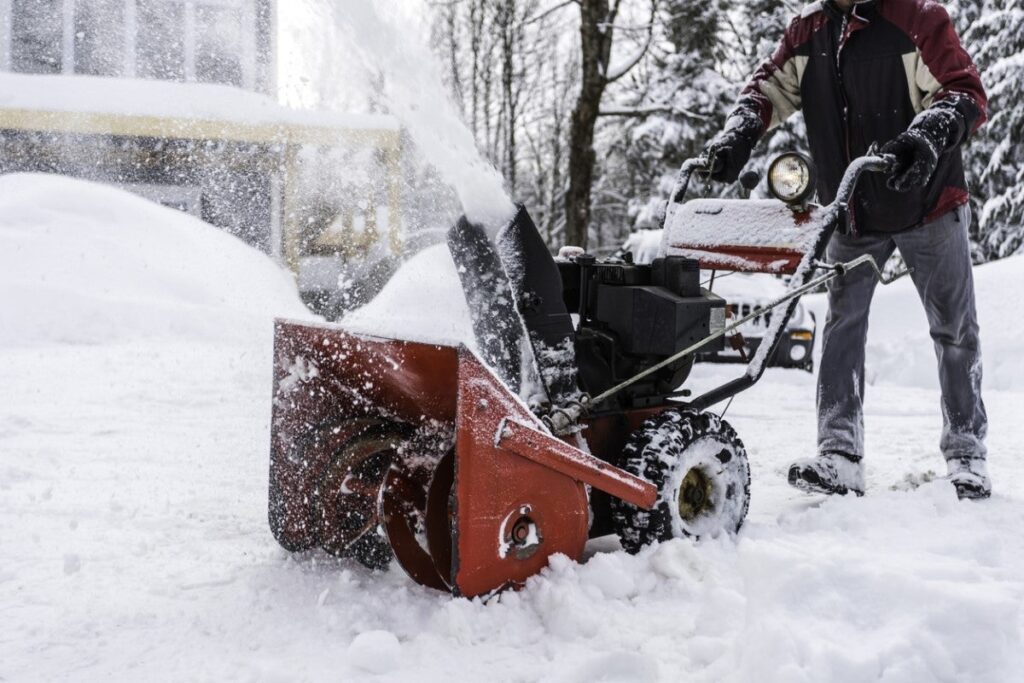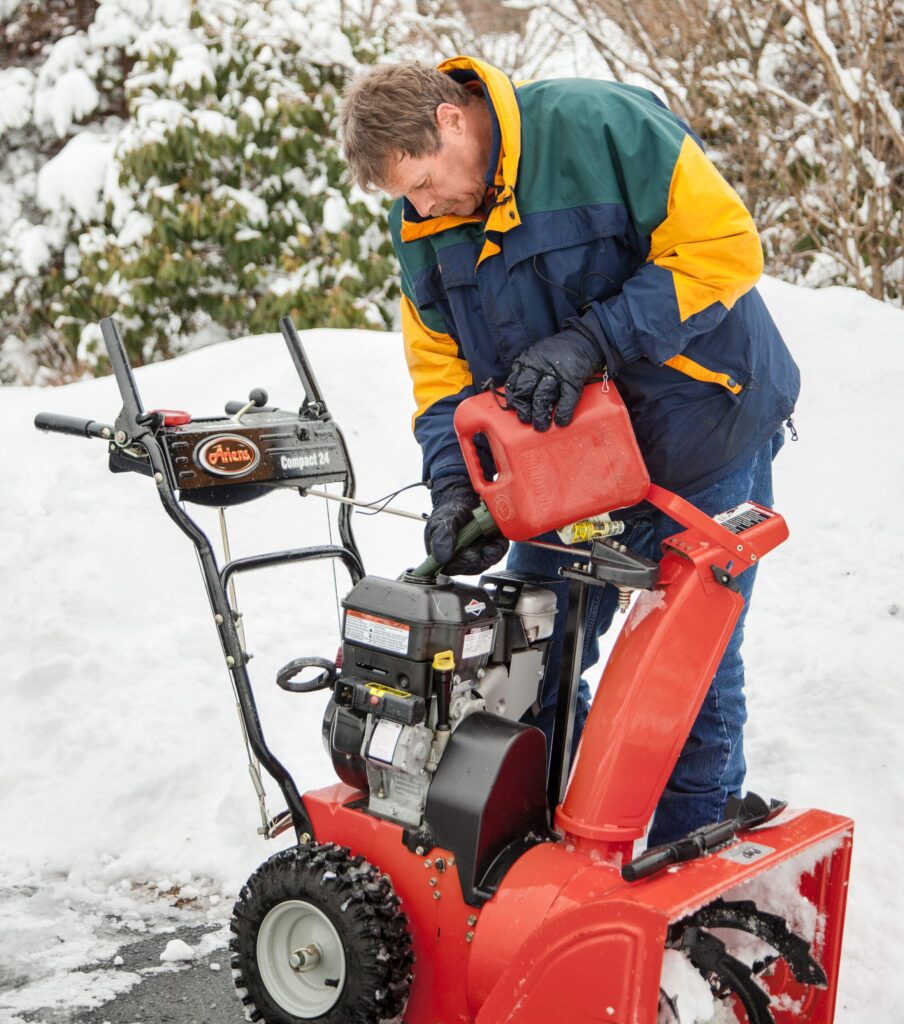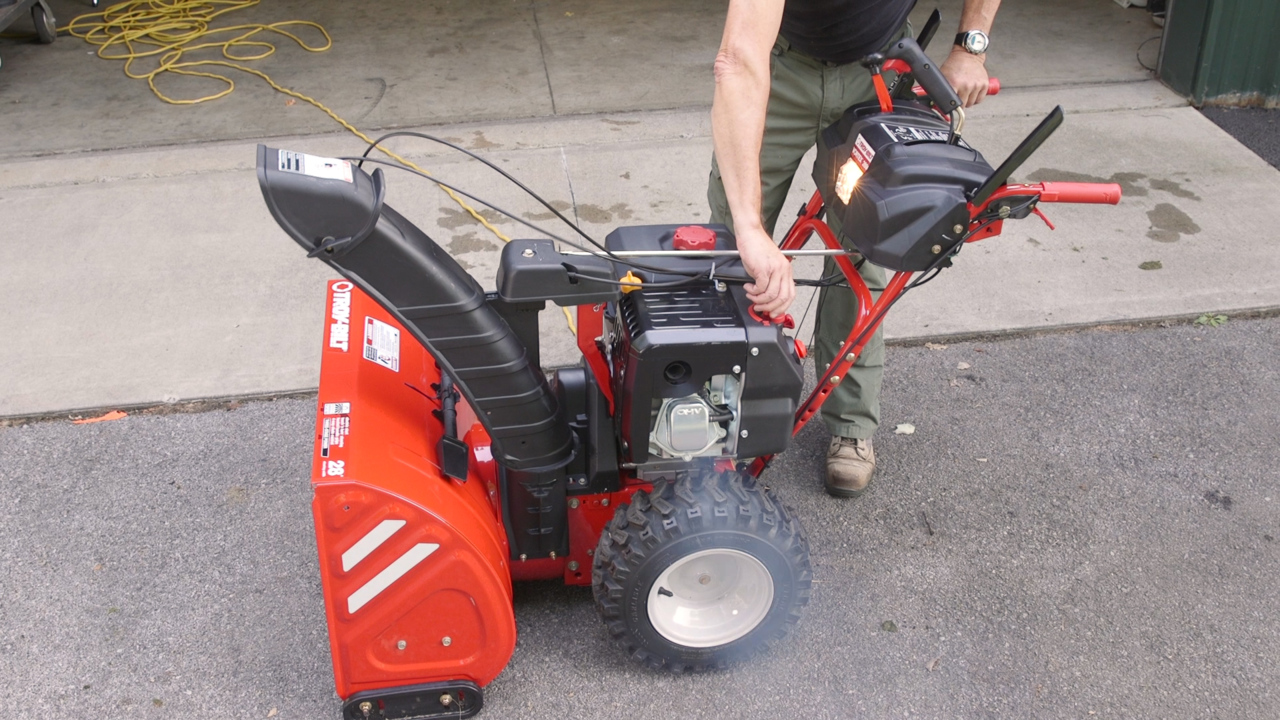In this article, we will provide you with some helpful tips on what you should do to your snowblower before the winter season arrives. We will discuss important maintenance tasks that will ensure your snowblower is in good condition and ready to tackle the snow. From checking the spark plug to changing the oil and inspecting the belts, we will cover all the necessary steps to prepare your snowblower for the cold weather. By the end of this article, you will have a clear understanding of the steps you need to take to keep your snowblower running smoothly all winter long.
Inspect and Clean the Snowblower
Winter is just around the corner, and that means it’s time to dig out our trusty snowblowers. But before we rely on our snowblowers to clear away the snow and ice, it’s important to inspect and clean them to ensure they’re in optimal working condition. Here are a few steps we can take to get our snowblowers ready for winter.
Check for any visible damage
The first thing we should do is visually inspect our snowblowers for any signs of damage. Look for cracked or loose parts, worn-out belts, or bent components. Pay close attention to the auger, impeller, and chute, as these are the key areas that handle the bulk of the snow clearing. If any damage is noticed, it’s important to address it before the season starts, either by repairing or replacing the affected parts.
Clean the snowblower thoroughly
Snowblowers can accumulate dirt, debris, and even rust during the off-season. Before we start using our snowblowers, it’s crucial to clean off any build-up. Begin by removing any large chunks of dirt and debris using a brush or scraper. Next, use a hose or pressure washer to thoroughly wash the entire snowblower, paying particular attention to the chute and auger housing. Be cautious when using water near electrical components and ensure everything is thoroughly dried before starting the snowblower.
Remove any debris or obstructions
While cleaning our snowblower, we should also check for any remaining debris or obstructions that could potentially hinder its performance. Inspect the auger, impeller, and chute for any twigs, leaves, or other objects that may be lodged in them. Use a brush or gloved hand to remove any remaining debris. This will not only improve the snowblower’s efficiency but also prevent damage to the internal components.
Check and Replace Fuel
Once we’ve inspected and cleaned our snowblower, it’s time to check its fuel system.
Inspect the fuel line for leaks
Start by visually inspecting the fuel line for any signs of leaks or cracks. A leaking fuel line can not only affect the performance of the snowblower but also pose a safety risk. If any damage is detected, it’s important to replace the fuel line before using the snowblower.
Remove old fuel from the tank
If the snowblower has been sitting idle for an extended period, the fuel in the tank may have deteriorated. Stale fuel can cause starting issues and damage the engine. To avoid these problems, drain the old fuel from the tank using a siphon pump or by tilting the snowblower and carefully pouring the fuel out. Dispose of the old fuel properly according to local regulations.
Add fresh fuel
After removing the old fuel, it’s time to add new fuel to the snowblower. Use fresh, unleaded gasoline with the correct octane level recommended by the manufacturer. It’s also a good idea to add a fuel stabilizer to prevent the fuel from deteriorating over time. Avoid overfilling the tank, as this can lead to fuel leaks.

This image is property of empire-s3-production.bobvila.com.
Replace Spark Plug
The spark plug is an essential component of the snowblower’s ignition system. Over time, the spark plug can become fouled or worn out, resulting in poor engine performance. Here’s how we can replace the spark plug:
Remove the old spark plug
Start by disconnecting the spark plug wire from the spark plug. Then, using a spark plug socket, carefully loosen and remove the old spark plug from the engine. Inspect the spark plug for any signs of damage, such as cracks or excessive carbon build-up.
Check the gap and condition
Before installing the new spark plug, it’s important to check the gap to ensure it matches the manufacturer’s specifications. Use a gap tool or feeler gauge to measure the gap between the center and ground electrode of the spark plug. Adjust the gap as necessary by carefully bending the ground electrode.
Install a new spark plug
Once the gap is set correctly, insert the new spark plug into the spark plug socket. Carefully thread the spark plug into the engine by hand to avoid cross-threading. Once it is hand-tight, use the spark plug socket to tighten it securely. Finally, reconnect the spark plug wire to the spark plug.
Change Engine Oil
Just like any other engine, a snowblower’s engine requires regular oil changes to ensure smooth operation and longevity. Here’s how we can change the engine oil:
Drain the old oil
Start by positioning a drain pan underneath the engine to catch the old oil. Locate the oil drain plug, usually located near the bottom of the engine, and remove it using a wrench or socket. Allow the old oil to drain completely into the pan. Be careful as the oil may still be hot.
Replace with fresh oil
While the old oil is draining, locate the oil fill cap on the engine and remove it. Refer to the snowblower’s manual for the recommended type and quantity of oil. Slowly pour the fresh oil into the oil fill opening. Avoid overfilling, as this can cause engine damage. Once the oil level reaches the recommended level, replace the oil fill cap.
Check the oil level
After adding the new oil, it’s important to check the oil level to ensure it’s at the proper level. Locate the oil dipstick on the engine and remove it. Wipe it clean with a rag or paper towel, then reinsert it into the oil fill opening without screwing it in. Remove the dipstick again and check the oil level. If needed, add more oil to bring it to the recommended level.

This image is property of assets.searshomeservices.com.
Inspect and Adjust Belts
Belts play a crucial role in the operation of a snowblower. They transfer power from the engine to the auger and impeller, enabling them to clear away the snow effectively. Here’s how we can inspect and adjust the belts:
Check for wear or damage
Inspect the belts for any signs of wear, cracks, or fraying. Over time, belts can become stretched or damaged, which can lead to reduced performance. If any damage is detected, replace the affected belts. It’s a good idea to keep spare belts on hand for quick replacement when needed.
Adjust the tension if needed
To ensure optimal performance, the belts should be adjusted to the correct tension. Refer to the snowblower’s manual for the recommended tension specifications. Use the appropriate tools to adjust the tension of the belts as necessary. Be careful not to overtighten the belts, as this can cause premature wear and reduce their lifespan.
Replace any worn-out belts
If the belts are excessively worn or damaged, it’s important to replace them before using the snowblower. Follow the instructions in the snowblower’s manual for replacing the belts. Ensure the new belts are properly installed and adjusted to the correct tension.
Grease Moving Parts
Proper lubrication of moving parts is crucial for the smooth operation of a snowblower. Here’s how we can ensure our snowblower’s moving parts are adequately lubricated:
Apply grease to auger and impeller
The auger and impeller are the key moving parts in a snowblower. Applying a thin layer of grease to the auger shaft and impeller bearings will reduce friction and ensure smoother rotation. Use a high-quality, all-purpose grease that is compatible with the snowblower’s components.
Lubricate other moving parts
In addition to the auger and impeller, there are other moving parts that require lubrication for optimal performance. These may include the chute rotation mechanism, auger cable, and other pivot points. Consult the snowblower’s manual for the recommended lubrication points and use the appropriate lubricant for each component.
Ensure smooth operation
After greasing the moving parts, manually rotate the auger and impeller to ensure they move smoothly and without any binding. If any resistance is felt, double-check the lubrication and make any necessary adjustments. Proper lubrication will not only improve performance but also extend the lifespan of the snowblower.

This image is property of cf-images.us-east-1.prod.boltdns.net.
Test the Starter and Battery
Without a functional starter and battery, our snowblower won’t be able to start reliably. Here’s how we can test these components:
Check the starter for proper functioning
Attempt to start the snowblower using the starter. If the starter motor spins and engages the engine smoothly, it is functioning correctly. If the starter motor fails to engage or makes unusual noises, it may require repair or replacement. Consult a professional if needed.
Test the battery’s charge level
If the snowblower is equipped with a battery, it’s essential to ensure it has a sufficient charge. Use a multimeter to measure the voltage of the battery. A healthy battery should typically have a charge of 12.6 volts or higher. If the battery voltage is below the recommended level, it may require charging or replacement.
Replace if necessary
If the starter or battery is not functioning correctly, it may be necessary to replace the affected component. Consult the snowblower’s manual or seek professional assistance for the appropriate replacement parts and procedures.
Inspect and Inflate Tires
The tires of a snowblower play a crucial role in its maneuverability and traction. Here’s how we can inspect and inflate the tires:
Check tire pressure
Inspect the tires for any signs of damage or excessive wear. Ensure that the tires have the correct air pressure as recommended by the manufacturer. Underinflated tires can affect the snowblower’s performance, while overinflated tires may cause the machine to bounce and lose traction.
Look for any signs of damage
Inspect the tires for any cracks, cuts, or bulges. Damaged tires may not provide the necessary grip and can pose a safety risk. If any damage is detected, replace the affected tire immediately.
Inflate tires as needed
Using a tire pressure gauge, check the air pressure in the tires. If the pressure is lower than the recommended level, use an air compressor or pump to inflate the tires to the proper pressure. Be careful not to overinflate the tires. Check the pressure periodically throughout the winter season and adjust as needed.

This image is property of www.snowblowers.net.
Adjust Skid Shoes and Scraper Blade
The skid shoes and scraper blade are essential for proper clearing and preventing damage to the snowblower. Here’s how we can adjust them:
Set the skid shoes to the correct height
The skid shoes are adjustable and allow us to control the height of the snowblower above the ground. Adjust the skid shoes so that the scraper blade is just above the surface. This will ensure that the snowblower clears the snow effectively without causing any damage.
Check and adjust the scraper blade
Inspect the scraper blade for any signs of wear or damage. A worn-out scraper blade will not effectively scrape the snow off the ground, reducing the snowblower’s efficiency. If the scraper blade is excessively worn, replace it with a new one. Adjust the scraper blade to the correct position to ensure optimal clearing.
Ensure proper clearing
After adjusting the skid shoes and scraper blade, test the snowblower on a small patch of snow to ensure it clears the snow adequately without leaving a layer behind. If necessary, make additional adjustments to achieve the desired results.
Conclusion
By following these steps, we can ensure that our snowblowers are ready to tackle the winter season. Regular maintenance and pre-winter preparations will prolong the lifespan of our snowblowers and provide optimal performance when we need it most. With a well-maintained snowblower, we can confidently face the challenges of winter and enjoy a clear and safe path. Stay warm and happy snow blowing!

This image is property of s42814.pcdn.co.
